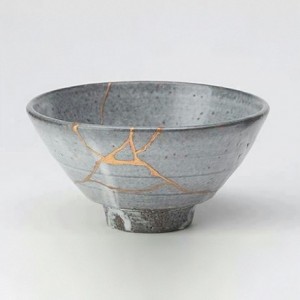aNewDomain — “I can’t just cry my whole life,” she said.
She was a therapy client during my internship year. But she wasn’t the only one to say so. A student said it later — I failed this important test, but I had to get over it or else cry my whole life over it. A friend said it — “I almost cried.” So why didn’t you? There’s always some resistance to it, always some instinct that crying is painful, to be avoided.
I wondered.
 If you were offered a life of weeping, would you take it? Or would you find a handgun, abort such a life before it could get rolling?
If you were offered a life of weeping, would you take it? Or would you find a handgun, abort such a life before it could get rolling?
When my father died, I couldn’t cry. At the funeral I couldn’t; with my family I couldn’t; with my mother I couldn’t cry. The capacity for weeping had been beaten out of my through two decades of a mobile life, too many goodbyes, too many losses, too much violence. So much scorn for feelings in those years, so much pain buried.
These days I can cry at the drop of a hat, and I like to. Yeah, it hurts, it sucks in many ways. But it also points me towards things that are true, and it affirms I’ve regained or simply gained some measure of humanity.
The turning point was therapy. I would never have gone except my graduate school required it. But since I was there I made the most of it.
We were talking about the funeral, even then fourteen years in the past, about soldiers folding a flag and handing it to my sister while I choked on my grief. Every time the tears came up, they would recede again as if shoved back down – but nothing conscious in me was doing the shoving. And while I described this scene, the doctor started to cry.
A few little tears in red eyes, a bit of nasal congestion, and that easily he pushed through three decades of learned repression.
I said, “why are you crying?” I wasn’t totally certain he didn’t just have allergies.
But he said back, “I’m crying for you, because you can’t cry for yourself.”
And I still couldn’t, not then, but I learned how. He opened me up, let me become soft, tender-hearted. Open. The more I learned to wonder at the world, to comprehend ambiguity, to chase things of meaning, the more I did those things the more that tears have come into my life.
If you were offered a life of tears, would you turn away from it? Or would you accept them as your guide to humanity, to truth and beauty, your proof of life? Would you turn away from your tears into a living death, towards empty pleasures, days of sunshine you could not see, of warmth that never touched your face? Would you give up all that weeping entails to escape it?
Love, I mean.
Would you choose never to love anyone so you would never have to mourn them?
I write to destroy myself. My fiction is a labor of annihilation. If I’m not covered in tears and snot by the time a chapter is done, I toss it out and start over. This is life: Finding what is true and worthy, finding what is authentic, and putting it into words or pictures or gestures. The crying is what lets me know I have been honest with myself, true to the labor. Tender and tenderhearted.
I remember the years of being unable to do this, unable to see love or truth or beauty because they were hidden behind whatever veil was holding back the tears. If my choices were either a life of weeping or a life of never being able, I know what I would choose. It’s easy. No contest.
 It hurts to cry, at least a little, but I am not distressed by it. I am fulfilled by it, enriched, informed. Created.
It hurts to cry, at least a little, but I am not distressed by it. I am fulfilled by it, enriched, informed. Created.
Kintsugi is the Japanese art of repairing broken things using gold to highlight the fractures. The breaks are beautiful, the repairs beautiful. A broken vessel, once repaired, is more beautiful than before it was broken. That’s why I do it. That’s why I smash myself to pieces, over and over, in pursuit of something genuine.
It doesn’t matter to me whether it makes you cry, too. I mean, I like to hear about it when it does — it is my privilege to help people weep over the important things — but I am not disturbed or insulted if my work doesn’t push your buttons. I know I’ve told truth as I see it, given away what is inside me, and that has to be good enough.
So… would you? Give up every future tear knowing the cost – truth, beauty and love?
Hemingway knew. He said, “The world breaks everyone and afterward, some are stronger at the broken places.” “There is nothing to writing. All you do is sit down at the typewriter and bleed.” “Happiness in intelligent people is the rarest thing I know.” “All things truly wicked start from innocence.” “A man can be destroyed, but not defeated.” “All good books have one thing in common: they are truer than if they had actually happened.”
 My first novel to be published has much to do with all of this. The first pages describe the death of my father, couched in metaphors, fictionalized. I’d like to share them with you because, while they are fiction, they say something true.
My first novel to be published has much to do with all of this. The first pages describe the death of my father, couched in metaphors, fictionalized. I’d like to share them with you because, while they are fiction, they say something true.
“Goodbye, Ernest. I love you and I’ll see you in Heaven.”
“I don’t want you to die,” he said, knowing he couldn’t change it and that she was most likely right. Tonight was the night, her last night. She had been a big lady in life, big in body, big in spirit, always loving and giving and letting the looks and comments about her and about him just slide right off, though they secretly hurt very much.
“It’s all right, dear, I’m ready now. I’ve plenty of morphine. It won’t hurt. Once you’re away, I’ll just press the button and drift off to sleep for the last time. I won’t even know. I’m not afraid. Jesus is waiting for me in Heaven.”
He knew Jesus was not waiting for her in Heaven and he did not know if she was teasing him. Ernest had never been a believer, but she loved him anyway.
“Just tell me you love me and kiss me once more and then I’ll be off,” she said, as though getting ready to go to the shops for tea and milk. “I’m ready now.”
But he couldn’t do it. He couldn’t say it. He didn’t love her, not as she understood the word. He couldn’t, didn’t know how.
He let himself be choked up, absently brushed away a tear, and kissed her gently on the cheek. Her skin was parchment-thin, dry, her lush body now sunken in and skeletal. He’d never carried her over the threshold when they had married but he had carried her into this hospital bed in this sterile hospice room with the television in the corner with the broken volume control. Now it was whispering about how to cook pasta in a microwave container.
 He held her hand for a few minutes, then reached over for her other hand, the one holding the controller for her morphine. He looked at her eyes, she looked back at his and nodded. And he helped her push in the plunger, the one that would make all the pain stop – her pain, not his. She had said she would do it but she was really too weak now to do anything. He did this last thing for her because he could not do the other, could not give her the pretty lie she wanted, that he loved her and always had.
He held her hand for a few minutes, then reached over for her other hand, the one holding the controller for her morphine. He looked at her eyes, she looked back at his and nodded. And he helped her push in the plunger, the one that would make all the pain stop – her pain, not his. She had said she would do it but she was really too weak now to do anything. He did this last thing for her because he could not do the other, could not give her the pretty lie she wanted, that he loved her and always had.
When her eyes closed for the last time, when he was sure she was sleeping peacefully, he said softly, “No, love, I never did. I couldn’t. I don’t love you, but I’ve done my best all this time.”
And then it was time to go. The heart rate monitor in the corner, so familiar now it was unnoticed, let out its high-pitched alarm and the nurses came. The doctor double checked the do-not-resuscitate order and went off to do the paperwork.
And Ernest, more lost than ever before, went home to make breakfast.
For aNewDomain, I’m Jason Dias.
Cover art: “Beweinung Christi Erfurt um 1480 detail” by Photo: Andreas Praefcke – Own work. Licensed under Public Domain via Wikimedia Commons.
Art, top: “Miedo-ajeno” by RayNata – Mis documentos. Licensed under Public Domain via Wikimedia Commons.
Kintsugi art: See page for author [Public domain], via Wikimedia Commons
Morphine shot: See page for author [CC BY 4.0], via Wikimedia Commons













